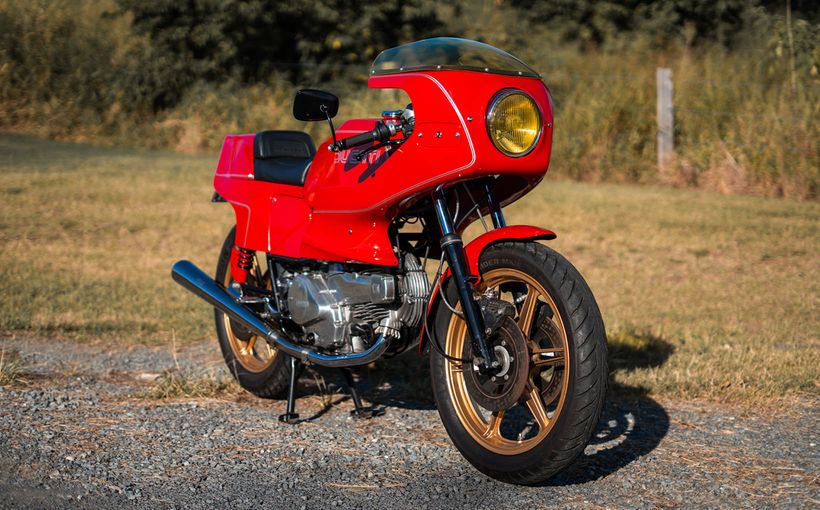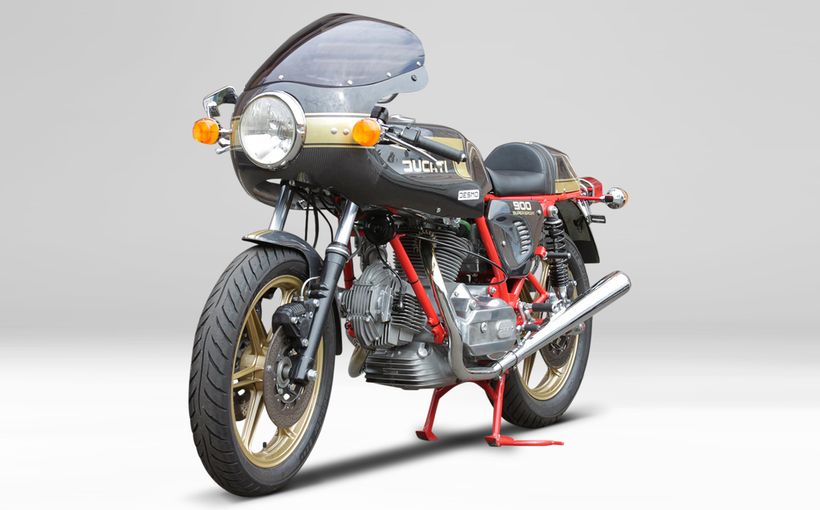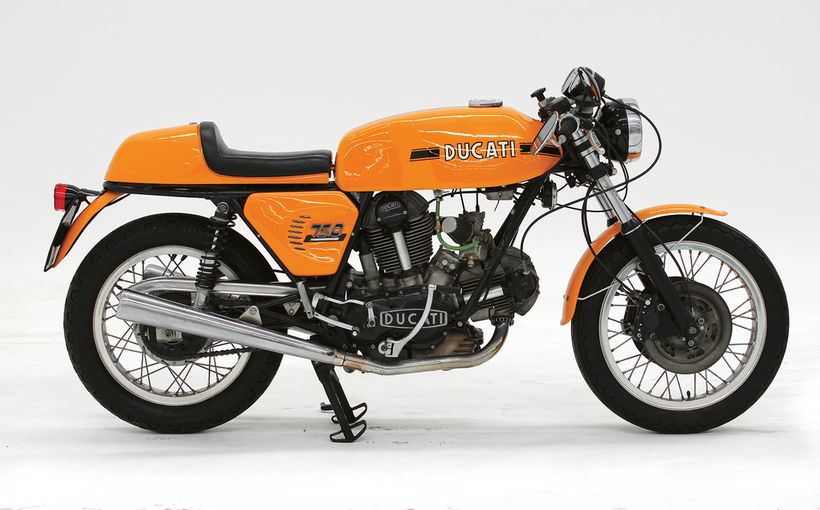Ducati Monster: Italy and the world loved Il Mostro

In the early 1990s, the Italian automotive industry offered two dramatic new models which were dubbed Monster, or in Italian Il Mostro, one of which rode on four wheels, the other on two. But only one of these, the Ducati Monster carried the name officially. The Alfa Romeo SZ (Sprint Zagato) earned the nickname Il Mostre, largely because of its aggressive styling – it was an epithet welcomed by Alfa Romeo management.
The SZ went on sale in strictly limited numbers with 1036 made from 1989 to 1991. It was conceived in less than three years, just at that crucial time that Alfa Romeo was switching from rear-wheel drive to front-wheel drive, a transition not welcomed by Alfa aficionados. The SZ, based on the 3.0-litre edition of the Alfa 75 sports sedan, but with 210kW (up from 170) sent to the rear transaxle and a race-oriented suspension. It weighed less than 1300kg and was a proud encapsulation of Alfa Romeo tradition. In hindsight, the SZ sung the swansong of rear-wheel drive Alfas.

(Image: wheelsage.org)
Who can say whether Ducati’s product planners were influenced by Il Mostro in choosing a moniker for their radical new motorcycle? But there can be no doubt that they were aware of the interest that attended the brutal SZ, a sports coupe uncompromised by complexities such as four-wheel steering (high fashion in the late 1980s), all-wheel drive or even anti-lock brakes; it could be retrospectively described as ‘naked’. When the cognoscenti dubbed it ‘The Monster’, there was no doubt the term was complementary! So much so that the even more bespoke Alfa Romeo RZ (1992-1994, 284 produced) carried the sub-title ‘Mostro’.
Given the timing and the centrality of both these marques in Italian automotive culture, it is difficult to believe that this sharing of the Monster sub-brand could have been entirely coincidental; imagine owning both! Ducati revealed its Monster as a prototype at the International Motor Show in Cologne in 1992. Essentially, this was an amalgam of 900 Supersport engine (with different carburettor and exhaust) and 851/888 chassis, minus the fairings. ‘All you need are: saddle, tank, engine, two wheels and handlebars,’ explained Miguel Angel Galluzzi, designer of the Monster.

(Image: BikeReview.com.au)
The M900 Monster went into production as a ‘naked bike’, the first of a whole new generation of café racers, a true back to the future concept, which could only have been retrospective because before the mid-1970s – BMW was the first with a full fairing on its 1976 R100RS – all motorcycles had their frames and mechanicals on full display – here is a point of commonality with the Alfa SZ, which dispensed with electronic tricks in favour of a pure performance approach. One wonders how many Ducati enthusiasts bent on purchasing a blood-red 900 Supersport changed their minds on seeing this naked counterpart.
No question, the decision to introduce the Monster and then to give it what now looks like a permanent place in the product lineup was the right one. The Monster accounted for a monumental 42 per cent of Ducati sales from 1993 to 2000. It was perhaps the major factor in restoring financial stability to the company. Founded by the Ducati family in 1926, it was sold in 1950 and changed owners several times thereafter.

(Image: Ducati)
The Ducati Monster is truly a Super Model motorcycle and may now be judged one of the most significant newcomers in the last quarter of the twentieth century, alongside legendary machines such as the Honda CB750 Four, The Yamaha R1 and the Suzuki Hayabusa.
Much of the appeal was the sense that the Monster was a purer type of motorcycle, stripped of the aerodynamically efficient and expensive-to-replace fairing. But even so it was still a Ducati, regarded by many as the two-wheeled equivalent to Ferrari.
The 851/888 Trellis Frame of tubes has its own beauty, which is only enhanced by the knowledge that power is supplied by the legendary 904cc air- and oil-cooled Pompone engine.

(Image: wheelsage.org)
A huge fuel tank sandwiched between the rider and handlebars opened to reveal not just a tank but access to the battery, fuses, air filter and other componentry. In a Ducati first, the tank was opened in a similar manner to which a ski boot is attached/released, via a strong and simple clip.
Despite its visual simplicity, the Monster was not offered up as some kind of bargain edition; in most markets it was considerably dearer than a Honda Fireblade.
Less expensive editions would follow, the first of these the 1994 M600. This more compact Monster used the air-cooled 600SS engine in a less elaborate chassis – for example, it used a single front brake disc. The price was roughly two-thirds that of the original M900 and, at 175kg, it was 10kg lighter.
Demand for the M600 Monster was strong but perhaps the Ducati marketing dudes began to strive too hard because the 1996 M750 – a kind of intermediate Monster – was a slow seller and was discontinued after just one season.

(Image: wheelsage.org)
There have been too many Monster variants to list in this story. By the year 2000, the Monster had dispensed with air-cooling in favour of the by then ubiquitous liquid cooling and the engines were of four-valve-per-cylinder configuration. Standout models include the 2007 S4RS with its 129-horsepower Testastretta engine, Marchesini wheels and Öhlins suspension and the 2014 Monster 1200 with 133 brake horsepower from its liquid-cooled 1198cc Testastretta V-Twin. An S version followed.

(Image: wheelsage.org)
The most significant advance in the Monster’s career came in 2021 when the tubular trellis frame was dispensed with in favour of an all-aluminium twin-spar design. Finally, instead of a confusing plethora of variants, there was – just as in 1993 – only one Monster.

(Image: Ducati)
Surprisingly, given the lasting enthusiasm for some of the big-engined Monster variants of the recent past, the engine was a 937cc unit (as seen in the Supersport and Hypermotard) making 111 horsepower.

(Image: Ducati)
It is tempting to conclude that far and away the most significant in the long line of Ducati Monster café racers is the 1993 original, a machine that not only brought stability to the company but inaugurated a whole new genre. Three decades down the bitumen, it is always the Monster that comes to mind when this style of motorcycle is referenced.









